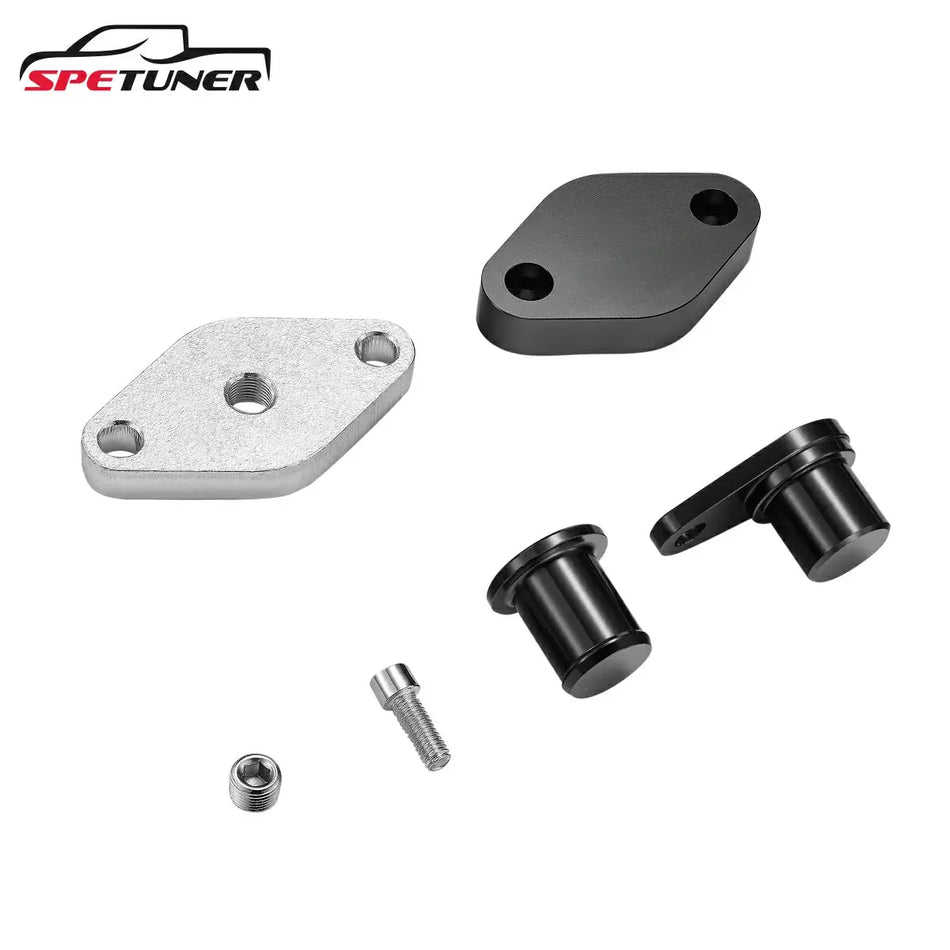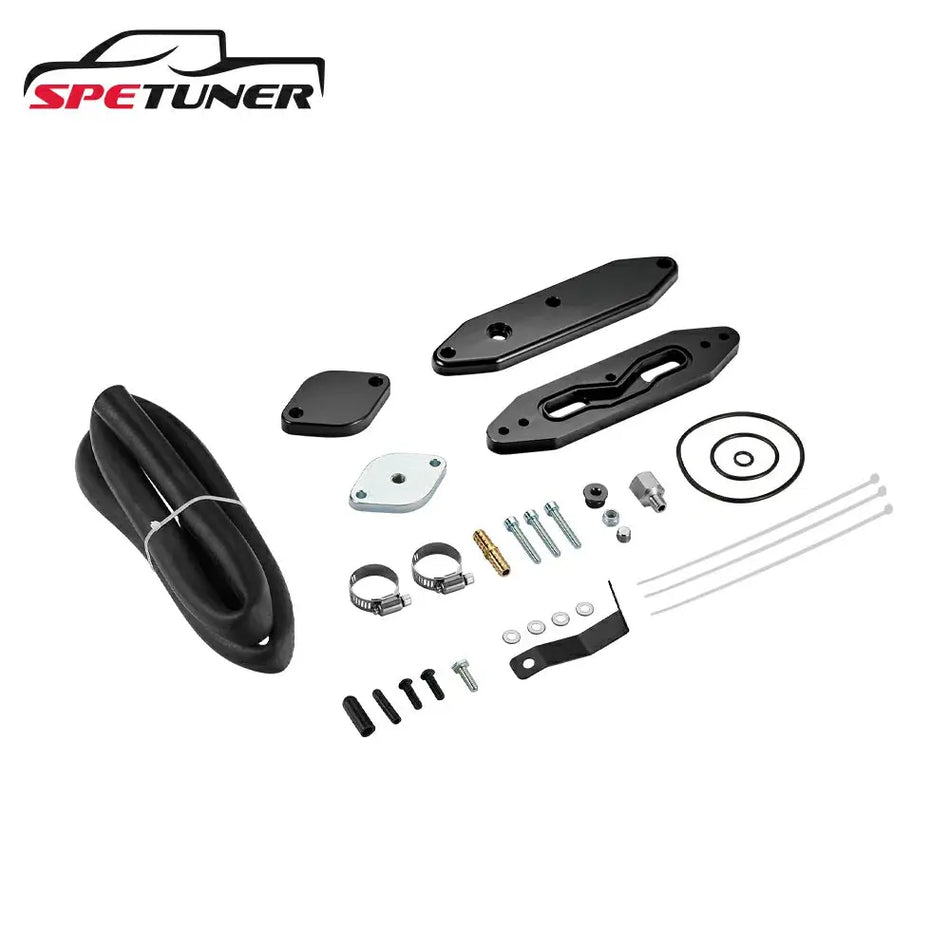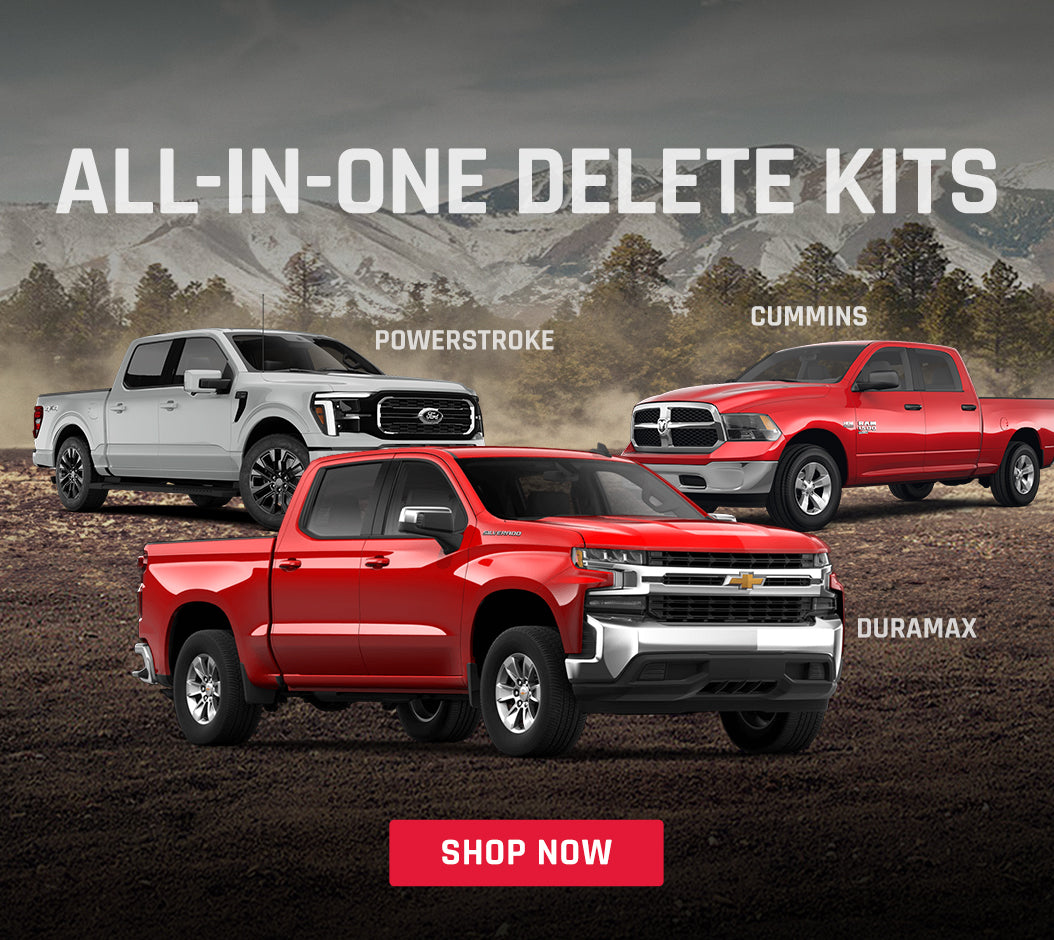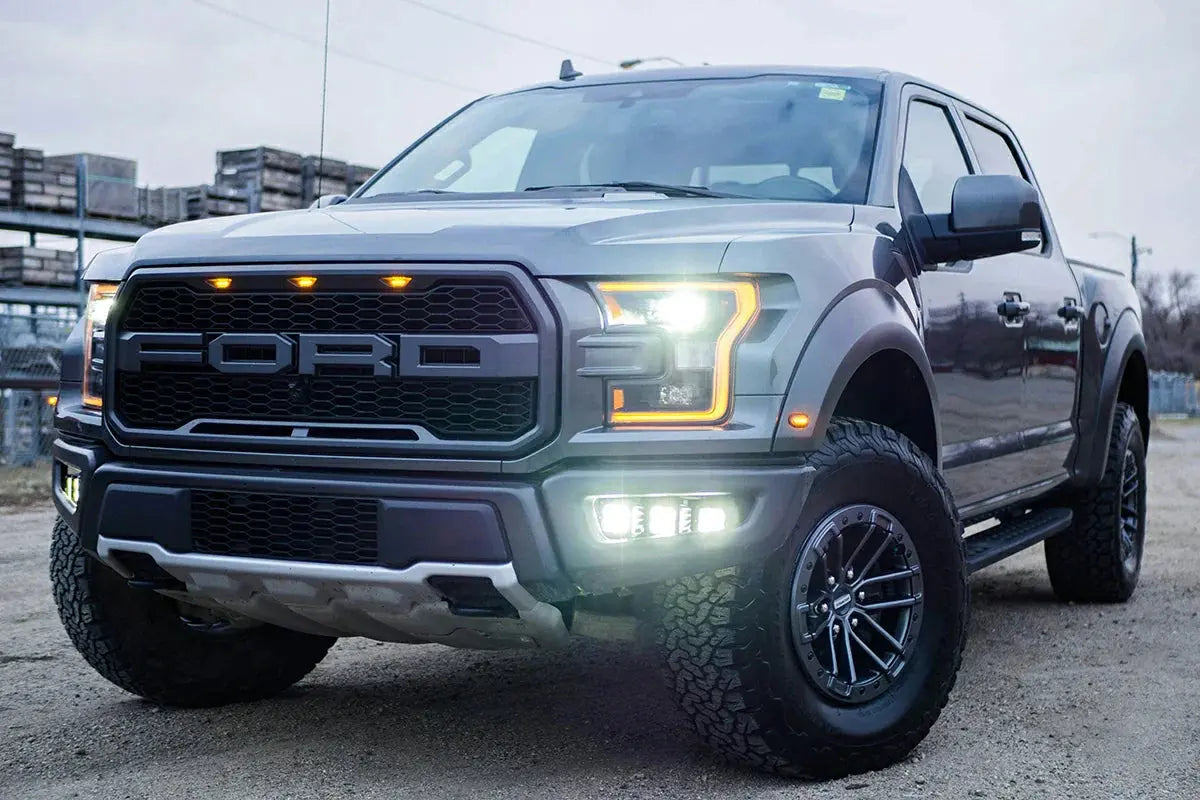Author: Lars — Diesel Technician & SPETUNER Contributor
The 6.7L Powerstroke is a workhorse. Whether it’s towing, hauling, or long highway pulls, owners quickly notice how much heat, soot, and stress these engines live under. That’s why many off-road and competition drivers start looking into EGR modifications to unlock more reliable performance from their trucks.
In this guide, we’ll walk through what an EGR delete kit actually is, how the system works on a 6.7 Powerstroke, the pros and cons to consider, and how to evaluate which solution is the “best” fit for your needs — always within the limits of your local laws and strictly for off-road/competition use.
What Does a “Delete Kit” Actually Do?
In simple terms, a delete kit is a group of parts designed to change how your diesel engine handles exhaust and emissions-related hardware. For off-road setups, these packages are used to:
- Reduce exhaust flow restrictions
- Cut down on soot and heat re-entering the intake
- Help the engine run cooler and more consistently under load
Because of that, delete-style packages have become popular with owners who push their trucks hard in race, sled pull, or other non-road environments and want more consistent performance and easier maintenance.
Know 6.7 Powerstroke
Ford’s 6.7L Powerstroke was engineered to deliver strong torque while still meeting modern emissions standards. You’ll find it in Super Duty trucks such as the F-250, F-350 and F-450 across multiple model years.
To satisfy emissions regulations, the 6.7 Powerstroke uses a combination of exhaust gas recirculation (EGR) and after-treatment hardware. This is great for emissions, but it also means the engine has to work with more heat, more soot, and more complexity than older diesel platforms.
How the Factory EGR System Works
EGR stands for Exhaust Gas Recirculation. The concept is straightforward: the system routes a controlled amount of exhaust gas back into the intake stream. By mixing these gases with fresh air, combustion temperatures drop and NOx (nitrogen oxides) emissions are reduced.

On the 6.7 Powerstroke, the EGR system includes:
- An EGR valve that meters how much exhaust gas is recirculated
- An EGR cooler that lowers exhaust gas temperature before it re-enters the intake
- Associated piping, sensors, and control strategies in the ECU
Over time, however, this system can introduce soot and moisture into the intake side, contributing to deposits, reduced airflow, and extra stress on certain components.
For a deeper look at whether changing this system makes sense for your truck, check out our full breakdown of pros and cons.
Why Some 6.7 Powerstroke Owners Consider EGR Deletion (Off-Road Only)
For trucks used strictly in off-road or closed-course environments, some owners look to EGR removal packages as a way to simplify the engine and improve drivability. Typical benefits they’re chasing include:
- More stable performance: With EGR hardware out of the picture, airflow paths are simplified. This can help the engine feel more consistent under load, especially when towing or making long pulls.
- Less carbon buildup: Reducing or eliminating hot exhaust gas from entering the intake can slow the rate of soot and oil deposit accumulation on intake runners and valves, helping reduce the need for frequent clean-outs.
- Potential fuel efficiency gains: When the engine is breathing cleaner air and running more efficiently in a performance calibration, some owners report more miles per gallon in their specific off-road usage.
It’s important to remember that these are potential outcomes, not guaranteed results, and they depend heavily on the overall combination: calibration, mechanical condition, fuel quality, and how the truck is actually used.
We’ve also collected real-world data on power, torque, and cost across diesel platforms to help you set realistic expectations.
Important Legal and Warranty Considerations
Before changing anything in your emissions system, you need to understand the trade-offs and risks. EGR deletion or similar modifications may:
- Increase emissions: Removing or disabling emissions equipment will almost always increase tailpipe emissions compared to the stock configuration.
- Violate local laws for on-road vehicles: In many regions (including large parts of the U.S. and Canada), tampering with or removing factory emissions components on a vehicle used on public roads is illegal. Penalties can include fines and inspection failures.
- Impact warranty coverage: Manufacturers and dealers may deny warranty claims if they determine that emissions-related or performance modifications contributed to a failure.
For these reasons, any EGR modification should be considered for off-road or competition use only. Always check your local regulations and talk with a knowledgeable professional before making changes.
For current rules in 2025 and practical examples, read our legal overview for emissions modifications in 2025.
How to Choose an EGR Delete Kit for a 6.7 Powerstroke
When people ask, “What’s the best EGR delete kit for a 6.7 Powerstroke?”, the honest answer is: it depends on how you use the truck and what you’re prioritizing. Instead of chasing a single “best” option, focus on these key factors:
1. Exact Vehicle Compatibility
The 6.7 Powerstroke has gone through multiple updates across model years. Make sure any package you’re considering is explicitly designed for:
- Your exact model year range (for example, early vs. later 6.7 generations)
- Your truck configuration (F-250, F-350, F-450, cab/chassis vs. pickup, etc.)
Don’t assume that “universal” parts will fit everything — always confirm fitment information before buying. If you’re checking a used Ford before you buy, our visual and electronic inspection checklist for used 6.7 trucks walks through what to look for.
2. Components Included
Some packages focus purely on blocking and rerouting the EGR path, while others are part of a more complete strategy that might also consider intake airflow and cooling. Think about:
- Whether the kit includes high-quality block-off plates and coolant reroute hardware
- The quality of gaskets, O-rings, and fasteners
- How well the components are designed to work together
3. Build Quality and Materials
The environment under the hood of a 6.7 Powerstroke is hot, high-pressure, and vibration-prone. Look for:
- CNC-machined parts rather than thin, stamped pieces
- Corrosion-resistant materials and coatings
- Hardware grade and overall fit/finish
4. Calibration and Support
Any major change to how your engine handles air and exhaust should be paired with appropriate calibration from a qualified professional — especially in a diesel platform as sophisticated as the 6.7 Powerstroke.
The “best” setup is not just about hardware. It’s about how well the mechanical components, tuning strategy, and your specific use case all work together.
5. Reputation of the Brand
Because emissions modifications are a sensitive topic, you want to pick a brand that takes engineering, testing, and customer support seriously. Check:
- Real-world reviews from experienced diesel owners
- How clearly the company communicates off-road-only usage
- Responsiveness if you have questions or run into issues
For a higher-level look at different ways owners approach emissions changes, see our comparison of long-term emissions strategies.
SPETUNER’s Perspective on “The Best” 6.7 Powerstroke EGR Delete Kit
At SPETUNER, we look at “best” through the lens of reliability and repeatability for off-road and competition trucks — not just peak numbers on a dyno graph.
A strong 6.7 Powerstroke EGR solution should aim to:
- Maintain safe coolant and exhaust temperatures under heavy load
- Reduce soot contamination entering the intake path
- Work hand-in-hand with a well-designed performance calibration
- Use hardware that resists warping, leaks, and corrosion over time
When you’re comparing options, these are the same pillars we recommend you use to judge any package — whether it’s ours or another brand’s.

If you’re running a Duramax rather than a Powerstroke, you can also review our Duramax off-road performance guide for a platform-specific overview of trade-offs and setup choices.
Is an EGR Delete Right for Your 6.7 Powerstroke?
For some owners, especially those who mostly tow on public roads in regions with strict emissions testing, staying with a well-maintained stock emissions system may be the most practical and compliant choice.
For others who use their trucks in dedicated off-road or competition environments, an EGR modification package — paired with the right tuning and supporting hardware — can be one piece of a broader reliability and performance strategy.
In either case, it’s essential to:
- Understand your local emissions rules and inspection requirements
- Be honest about how and where the truck is actually used
- Work with experienced professionals when changing emissions-related systems
Final Thoughts
There isn’t a single, universal “best EGR delete kit” for every 6.7 Powerstroke. The right solution depends on your goals, your truck’s model year and configuration, and how strictly you need to adhere to local emissions regulations for on-road use.
Focus on compatibility, hardware quality, proper tuning, and a brand that stands behind its products. Keep legality and environmental impact at the front of your decision-making process, and treat any emissions-related modification as an off-road/competition-only change unless your local regulations clearly say otherwise.
When those pieces are in place, your 6.7 Powerstroke can deliver the strong, predictable performance you expect — and do it for a long time.










